
Orchestral Karaoke
Late in 2012, the Melbourne Symphony Orchestra took on a cinema classic and in the process elevated a pub pastime into art. AT catches up with those asked to bring the technical monster to life and the Frankenbernsteins who made the dream possible.
Photos: Lucas Dawson
It’s always risky trying to synchronise any live performance with pre-recorded material… just ask Beyoncé! Whether you’re belting out Eye of the Tiger at your local’s karaoke night or trying to drum along to a metronome, you need only stumble over one line or lose the click during an acrobatic fill and things can get ugly, quickly. Imagine then, trying to keep almost one hundred musicians in sync with pre-recorded vocalists and dancers, projected on a screen they can’t see for more than two hours. All the while directing a performance of one of the most beloved yet challenging scores in cinema history. I’ve developed a nervous tick just writing about it. It’s not clear whether he drew the short straw or simply stood still while his colleagues stepped back, but conductor Benjamin Northey was charged with navigating the Melbourne Symphony Orchestra through this musical minefield for their recent performances of the internationally touring West Side Story film with orchestra program.
OUR MAESTRO
I caught up with Ben, after he’d completed an alternating course of ice baths and trauma counselling, to find out how he kept an orchestra and his mind together through such perilous yet perfect performances.
Andrew Bencina: The MSO has recently embraced the opportunity to perform some complete cinema scores alongside screenings of films like The Lord of the Rings: Fellowship of the Ring and now West Side Story. Can you talk about conducting for the screen and how this process relates to the broader orchestral repertoire?
Benjamin Northey: I’ve done some film scores before but never live to screen. It’s always been something that’s been timed through, where synchronisation is not such a big deal. I’m not really a film conductor by any means, there are people who do that as a speciality, so I found it challenging to get my head around how unforgiving the combination of Bernstein’s score played alongside the film would be. You had to be so on! Otherwise, all of a sudden, you’re not with the singers or even more critically the dance sequences. Very different from the Lord of the Rings, which was essentially just scene background requiring the occasional synchronisation of some crescendos with cuts and things like that.
The closest thing — in the orchestra world — would be ballet. Conducting a ballet is similar because all the tempos are dictated to you by the choreographers and dancers and not the reverse. Though you’d never use a click, you just have to follow the dancing.
We had to remember that we weren’t doing our own version, we were actually replicating the nuances and in some cases the mistakes made during the original recording. Some of the actors had originally sung their parts (Natalie Wood in particular) only for the producers to decide it wasn’t good enough [while dubbing was commonplace in Hollywood musicals, it was unusual for the decision to be made after filming had been completed. Usually… — Ed]. In the case of West Side Story, they obviously kept the vision of them singing and got professional singers to overdub (Marni Nixon for Wood and Jim Bryant for Richard Beymer). In one sense this is fine, you get a better quality of sound, but at the same time you have to copy all the flaws of the lesser singer. Like the tempos… they might not have had the breath control so they sing faster and all of a sudden certain sections become less musical. It was very difficult; even listening to it over and over it was hard to predict what they were going to do. That’s where the streamers were incredibly handy.
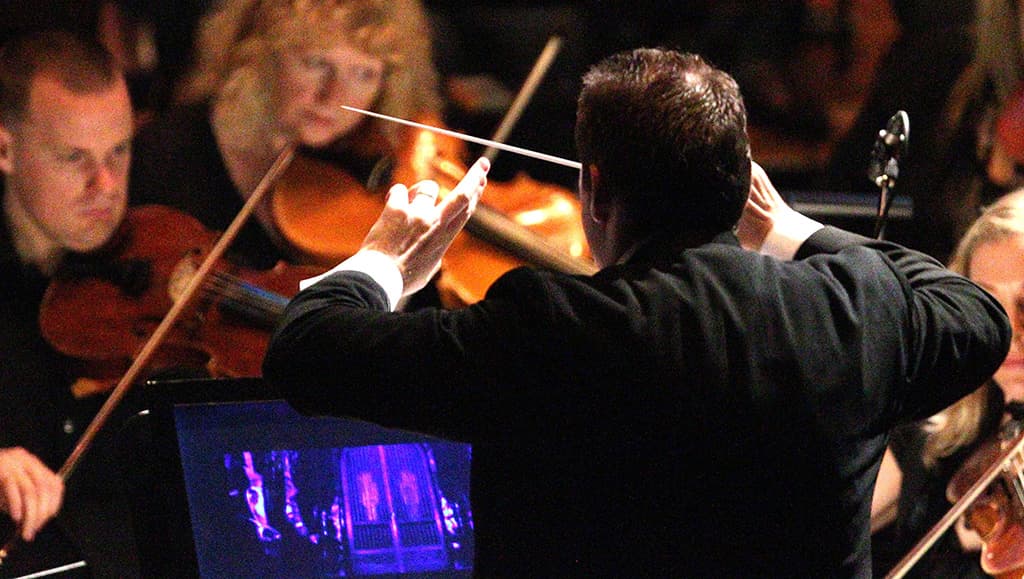
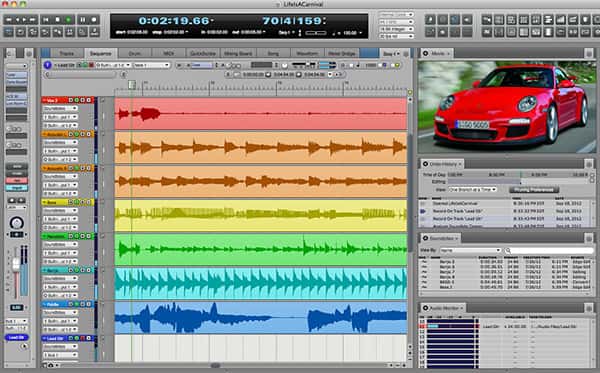
MOTU DIGITAL PERFORMER 8 ($599)
While many of the major players in the DAW market have omitted specialised film scoring features, Digital Performer remains a common choice for composers and arrangers in some part because of its ability to overlay streamers and punches over synchronised video. It hasn’t been implemented with music recording in mind but I’d imagine a stock video file of a black screen would suffice. You could even try video taping the band during their initial group tracking passes and insert the appropriate synchronised take as the backing video for your overdubs.
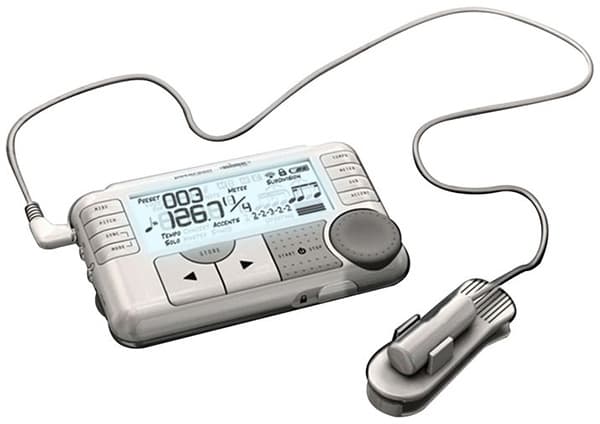
PETERSON BODYBEAT SYNC (US$129 street price)
From the makers of everyone’s favourite strobe tuners comes a tactile metronome that allows you to feel and see the groove as well as hear it. Just as visual input helps us to respond to musical cues, a vibration can be felt using a different part of the brain and augment our sense of time. It can’t provide as constant a source of feedback as a streamer but through the use of accents and different beat divisions you can get much closer than a 4/4 click. The BBS-1 has MIDI support for direct synchronisation with your DAW and it can also load custom tempo maps via USB connection. You can even synchronise an unlimited number of units together wirelessly with one as Master and all the others slaves to the rhythm.

PEARL THRONE THUMPER ($299 street price)
For drummers, there has long been a problem providing low end monitoring with weight that can compete with the volume of stage sound without compromising both microphone capture and in-ear monitoring. The solution is to attach a silent low frequency transducer to the drummer’s stool that amplifies this monitor signal and allows the drummer to hear this low energy by feeling it. Some more expensive systems come with everything built into the stool in concert with an amplifier/mixer (Porter & Davies BC2) while others require a retrofit (Throne Thumper & Buttkicker). With the right audio input these systems can also be used to transmit a metronome signal to assist you in feeling the groove even when you’re not sure you can hear it.


Many of the colour choices are self-explanatory: Green says “Go!”. Red, the end of a section and Blue, the end of a click track. White marks the downbeat of a bar while Violet streamers indicate tempo changes. Additional violet streamers have been used to indicate Beat 2 of the new tempo. This allows the conductor to communicate the new tempo with greater precision. A Yellow streamer indicates the start of an audible click track, often in advance of the bar downbeat as a warning. In this case, the ‘warning clicks’ define the tempo eliminating the need for secondary violet streamers. Punches are used to reinforce cue points, as important streamers reach the right edge of the screen. The flash is visible even in the conductor’s peripheral vision eliminating the need to constantly stare at the monitor.
When it came to touring internationally, Mike Runice employed a customised Mac Pro running Q-Lab live show control software (Figure 53 Q-Lab Pro Video US$249). “This allowed me to playback both the audience video containing the (mono) audio track and click track, and the streamers video as separate and synchronised files.”
STREAM OF WHAT NOW?
I’m often reminded, when flicking through the pages of this magazine, how diverse the audio technology industry is. So many devices and software tools exist as staples within a single field for decades without any significant impact on the broader recording world. While do-it-yourself-ers rejoice in the comparative processing power and flexibility of a portable interface in concert with laptop or tablet, for many, trying to get a single job done well, specialisation remains key.
When I sat down in the revitalised Hamer Hall for a nostalgic Saturday night at the pictures, the only new thing I expected to encounter was the venue itself. But within seconds of Ben raising his baton I was transfixed by a system of visual cues and timing feedback superimposed on the monitor screen before him. This was the solution to a quandary I’d been wrestling with for years; how can we use visual cues to augment the coarse division and aural distraction of the metronome, when sequencing, sample triggering and the use of pre-recorded elements makes timing critical? As it happens, if I’d bothered to take a few short metaphorical steps from the music studio to the orchestral sound stage I’d have found the answer waiting there for me — twiddling its thumbs for almost 80 years. The use of vertical lines (streamers) predictively moving across a screen to highlight forthcoming cue points is as old as the Hollywood Hills. For those of us who’ve grown up in a DAW dominated digital studio it may as well have been a product of Bhutan.
AB: It sounds like this was your first experience of using streamers as an aide to your conducting, what did you think of it?
BN: They were great. It just makes it easier… still hard, but easier. When you have to look at the screen, your score and the orchestra, it’s great to have that warning; to know what’s coming. It takes the guess work out of it. I think the more you use it, the better you get at making it natural. Familiarity with the music then brings everything together. The better we knew the piece, the more the lines of the streamers made sense. The challenge was to make natural music in an unnatural environment. That was the hard part and that was our job… to make it sound musical.
The whole process is an unmusical process, it’s all computers and dots and lines. At times I had to conduct very metronomically; just lay it down clear. During other types of performances, often it’s nice to simply guide listening amongst the orchestra — you let them go and just help them know who to listen for. You couldn’t do that in this type of performance, they just had to play exactly with me the entire time. They couldn’t take the foot off the gas and they were wonderful. I just had to say a few times, “Play right up on the stick, don’t play late.” And the more we did it, the more we got to know it, and the better it was.
HANGING BY A THREAD OF TIME
AB: So does that mean you’re ready to conduct an unfamiliar new work; one written especially for orchestra and film, with endless synchronisation of edits and filmed performers?
BN: It’s possible. You can do anything with that system and any piece of music would work. I wouldn’t recommend it for your own mental health but it would be possible.
AB: How about if we remove the click track safety net, could you have conducted using just the streamers?
BN: No. The nature of the orchestra is that it moves as a group. Imagine you’re in a massive ship and you need to turn a tight corner. You just can’t do it. An orchestra is like that. It’s fundamentally an inflexible beast, because of the number of people. That was what the click added to the performance, that sudden manoeuvrability. All the tempos had to be bang on, for the dance numbers especially. With only the streamers it wouldn’t have been possible. There’s no way that many musicians could cope with the crazy tempo changes that were going on. You’d be playing something that has a straight ahead groove (un-da, un-da, un-da, un-da) and it would be more like (un-da, uun – daa, uuun – daaa, uun – daa, un-da). That said, the click wasn’t always present… it wouldn’t have been used for more than half the score. During the critical rhythmic numbers it laid down time in quarter note beats so that we really locked in with the choreography.
AB: So you’re saying every member of the orchestra was listening to the click track via an ear piece?
BN: Every one!
AB: I know any number of four- or five-piece bands who could never attempt that. In large part because of what it does to their performance, but also because of the train wreck that awaits when you slowly drift out of time.
BN: It’s terrifying when that happens. It certainly happened during the first few rehearsals because the click moved so much. That’s where the orchestra needed to rely on me. As a result of the implosions I knew where those danger moments were and even though a lot of them had been marked in the score, there were just as many that hadn’t. A conductor can be helpful because they show you what’s coming not just what’s arrived (much like the streamers!). Some of the orchestra chose not to use the click and just followed; which I didn’t approve of. I figured they were making things harder than they need be, but they said, “No, no, you’re clear enough that we can follow you.” So, no pressure. That’s the thing about this show, if you made one mistake the whole musical number was…you know…trashed!
Of course there are myriad mobile metronome apps available. Many employ some form of visual feedback, from emulations of a classic pendulum to modern re-imaginations of ‘follow the bouncing ball’. At this point I haven’t found any that will sync with your DAW but some can sync across multiple devices via bluetooth. Either way it’ll be good practice while you harrass your DAW manufacturers to start hearing with their eyes.

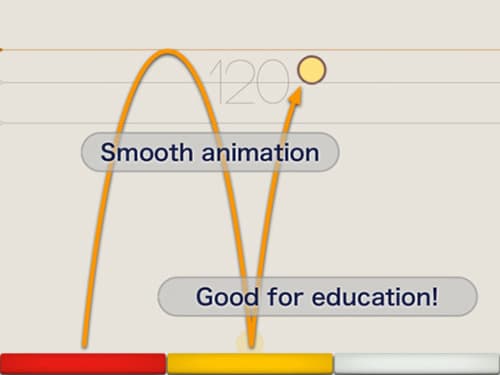


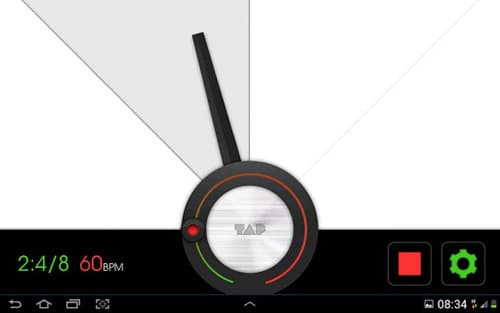
VISUAL METRONOME (Epoch Day)
Provides Tap tempo, bluetooth sync between multiple devices and two different visual feedback styles; a stylisation of the movement of a conductors wand and the closest thing I’ve found to a streamer.
iOS $0.99
METRONOME BOUNCE (KatokichiSoft)
A really nice metronome using an animated bouncing ball. The audio click sequence can be varied to play at different speeds against the bounce. I enjoyed getting in the flow as the ball drifts between the beats
iOS $1.99
ADAGIO (RisingJ Interactive)
A cross between Visual Metronome and Metronome Bounce, Adagio uses a bouncing ball following the classic path of a conductor counting out 4/4 time (only in the reverse direction). A very simple app, tap tempo is the only extra feature.
iOS $0.99/Android Free
METRONOME+ (Dynamic App Design)
A nice metronome with a healthy range of features. Uses a simple pendulum motion, with a striking resemblance to K.I.T.T.’s (Knight Rider) LED radiator grille.
iOS $1.99
VISUAL METRONOME (MA Apps)
This app produces a cross between a streamer and a pendulum. An arm rotates around a 180 degree axis but instead of changing direction it jumps back to the start. Beats are reinforced by flashing segments and the length of each cycle can also be adjusted.
Android Free
THE REAL SCORE
AB: When you place such rigid controls on an orchestra does it still work as a musical organism?
BN: It still works, but it does change, it’s no longer a spontaneous thing. That’s not to say it’s not filled with energy because some of the tempos were so fast that it was exhilarating to be in the middle of. It was a fascinating challenge. In many ways an intellectual as much as a musical challenge; just to actually concentrate that hard for that long — a two and a half hour film — knowing the consequences if something went wrong. I wouldn’t like to do that all the time because I love the freedom of being able to express something unique. That is after all why we do what we do.
AB: In 2013, the MSO will perform another series of orchestra with film programs — including; Fantasia, The Two Towers, Pirates of the Caribbean, Frozen Planet, Wallace & Gromit, and Tan Dun (a martial arts trilogy). Have these live film projects just become another staple part of what major orchestras do?
BN: It’s really become a genre of its own; part of the evolution of this art form. People think of the orchestra as a conservative artistic institution and it’s absolutely not. It’s actually very progressive and we’re doing some of the most adventurous artistic collaborations of any major arts organisation. The film with orchestra is one of those things and it’s exciting. Especially for something like West Side Story, where the focus is primarily on the music anyway. [Don’t say that around your local dance studio if you value your life – Ed] It’s such a masterpiece of the 20th century. Everybody listens in more focus when you’ve got an orchestra playing a score. They’re presented with the complexity of the composition right in front of them and it forces new audience members, who haven’t been to an orchestra before, to realise that music doesn’t just come out of a box. That it doesn’t manifest from your TV screen, or your surround cinema speakers. It’s real people behind that sound. It’s an important thing to demystify the process of how film scores work; because that’s where most people first hear an orchestra!
Much of this overview has been made possible by the generosity of those directly involved. Chase Audio, ADX and The Leonard Bernstein Office have all been incredibly open with both their time and documentation. I thank Ben Northey, Bob Heiber, Rick Silva, Kristopher Karter, Ken Hahn and Mike Runice for their contributions along with Garth Sunderland for the fantastic account of his work. Special thanks to Eleonor Sandresky, for connecting many of the dots, Steve Linder from IMG and Alison Macqueen from the MSO for their assistance.




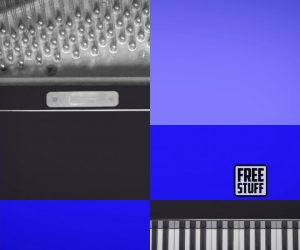





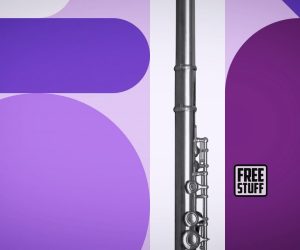





RESPONSES